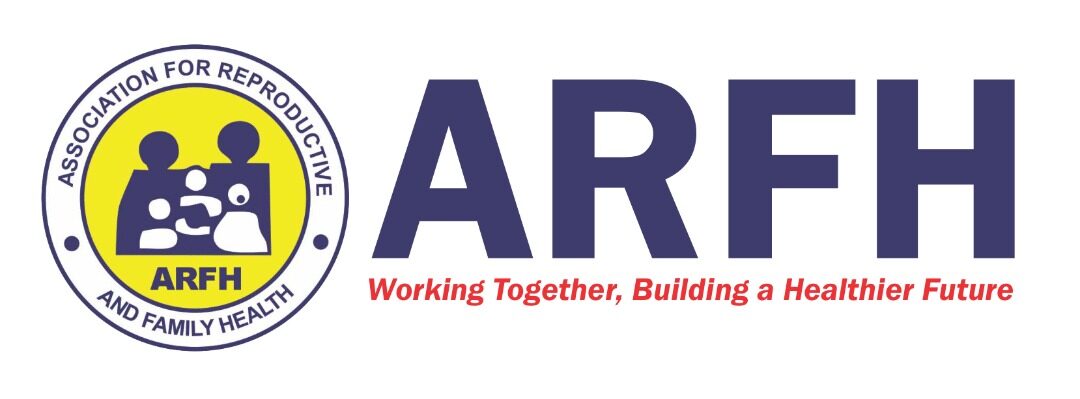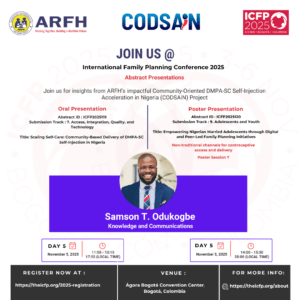Mr. Oladeji Adeyemi presenting the outcome of a study on young people with visual disability and HIV/AIDS in Oyo State, South Western Nigeria at the 17th ICASA Conference
Young people continue to remain at the center of the HIV/AIDS epidemic in Africa. Their behaviour, the extent to which their rights are protected, and the services and information they receive determine the quality of life of millions of young people including young people living with disabilities.
Young people with disabilities are among the poorest and most marginalized of the world’s youth. Estimates suggest that there are between 180 and 220 million youth with disabilities worldwide, and nearly 80 percent of them live in developing countries. Young people with disabilities, like any other group, are also affected by HIV. They have been almost entirely overlooked in HIV and AIDS programmes. This is a matter for extreme concern given that they are at equal or increased risk of exposure to HIV. With a population of over 162 million, Nigeria has a disproportionate youthful population of 31.7% being in the 10-24 years age group. In 2010, nearly half of the 3.1 million people living with HIV were between the ages of 15-24 (HSS 2010) Over 3 million Nigerians (2.3%) were living with disabilities out of which 45% were with visual disabilities (NPC 2007) .
With support from Oyo State Action Committee on AIDS, Association for Reproductive and Family Health (ARFH) carried out a descriptive and cross sectional study on ‘Increasing the access of young people with visual disability in Oyo State, Nigeria to HIV & AIDS prevention information through Braille’. Presenting the outcomes of the study at the 17th Conference on AIDS and STIs in Africa (ICASA), Mr. Oladeji Adeyemi, Program Manager at ARFH stated that the study was commissioned to assess knowledge of STIs & HIV information among Oyo State In-school youth with visual disabilities, determine the sexual behaviour, and determine preferred media to reach In-School youth with visual disabilities with HIV/AIDS prevention information.
 Located in south western Nigeria, Oyo State has a population of 5,580,894 out of which 32% is in the ages of 10 to 24 category (NPC 2007). The state also has 101,657 Person with disabilities of which 42% are visually impaired. There are three major schools for people with visual disability in the state; a primary school and two secondary schools Speaking at a Session on Key Population, Mr Oladeji mentioned that 98% of respondents had never heard of HIV and none could correctly define HIV. On the issues of their sexual practices, 16.3% (71% male & 29% female) had never had sex while the age of first sexual intercourse ranged from 10-24. Two sexually active female respondents reported using condom in the last three months for the sole purpose of pregnancy prevention. On preferred media for HIV/AIDS Information, 40% responded that their preferred medium for HIV/AIDS information is Braille while 28% preferred getting information at Seminars/Health discussions. 20% of respondents indicated that their preferred medium is TV and Radio programmes. 6% indicated counselling while 8% indicated Sex education programme.
Located in south western Nigeria, Oyo State has a population of 5,580,894 out of which 32% is in the ages of 10 to 24 category (NPC 2007). The state also has 101,657 Person with disabilities of which 42% are visually impaired. There are three major schools for people with visual disability in the state; a primary school and two secondary schools Speaking at a Session on Key Population, Mr Oladeji mentioned that 98% of respondents had never heard of HIV and none could correctly define HIV. On the issues of their sexual practices, 16.3% (71% male & 29% female) had never had sex while the age of first sexual intercourse ranged from 10-24. Two sexually active female respondents reported using condom in the last three months for the sole purpose of pregnancy prevention. On preferred media for HIV/AIDS Information, 40% responded that their preferred medium for HIV/AIDS information is Braille while 28% preferred getting information at Seminars/Health discussions. 20% of respondents indicated that their preferred medium is TV and Radio programmes. 6% indicated counselling while 8% indicated Sex education programme.
 Most young people living with disabilities will eventually form relationships, get married and have children of their own. They are actually at increased risk of becoming infected with HIV and at the same time are significantly less likely than their peers without disabilities to receive appropriate HIV and AIDS prevention, treatment, care and support services. This also applies to basic sexual and reproductive health rights services. Access to information on HIV/AIDS Prevention, treatment and care and support is key to reducing the prevalence among young people including those living with disabilities. Though awareness of HIV is very high among Oyo State In-school youth with visual disability, there exist some obvious gaps in their knowledge. Provision of HIV/AIDS Information in braille will be a good way to respond to their unique needs and reinforce information provided through other means.
Most young people living with disabilities will eventually form relationships, get married and have children of their own. They are actually at increased risk of becoming infected with HIV and at the same time are significantly less likely than their peers without disabilities to receive appropriate HIV and AIDS prevention, treatment, care and support services. This also applies to basic sexual and reproductive health rights services. Access to information on HIV/AIDS Prevention, treatment and care and support is key to reducing the prevalence among young people including those living with disabilities. Though awareness of HIV is very high among Oyo State In-school youth with visual disability, there exist some obvious gaps in their knowledge. Provision of HIV/AIDS Information in braille will be a good way to respond to their unique needs and reinforce information provided through other means.




